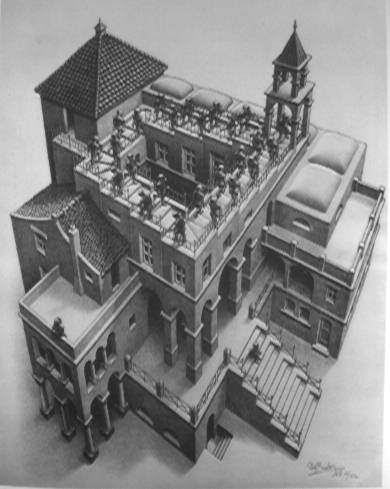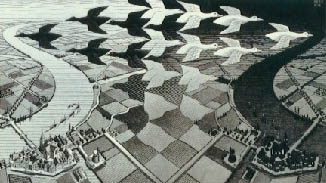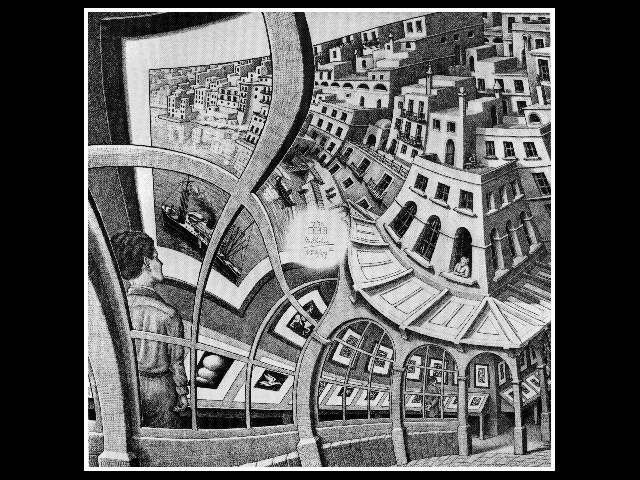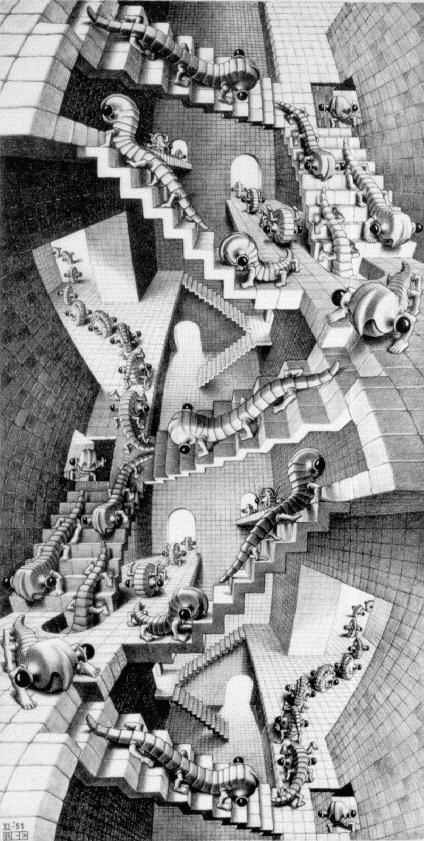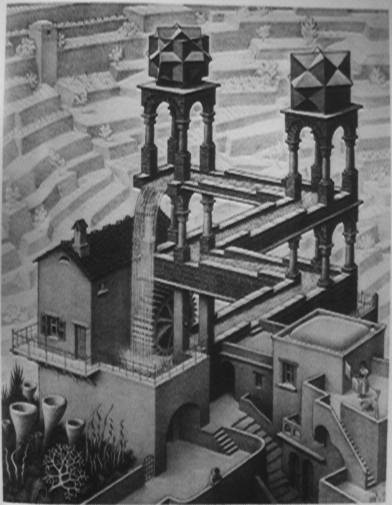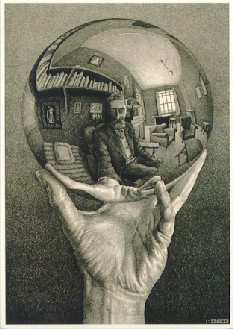|
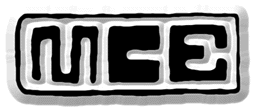
Maurits Cornelis Escher was a Dutch graphical artist who continues to receive praise for his
inventive, ingenious
art. He studied engineering and architecture as in secondary school but he received poor
grades in every aspect of his school work except drawing. His love for art progressed
throughout his life. He was constantly searching for new ways of expression. He became
recognized and famous in Europe long before news of his work spread to America. He began by
creating very realistic landscapes. The landscapes of Italy inspired most of his early
work. This received attention due to Escher's attention to detail and the intense reality of
his work. He later moved into the
very mathematic realm of tessellations. The intense mathematics behind tessellations was
not discovered until long after Escher had revolutionized them. What started out as just an
innovative way of covering a plane with designs without leaving any spaces between them grew
into a brand new art form with seemingly limitless possibilities.
Escher continued to dazzle the artistic community with his art. He studied the art of
metamorphosis and created large prints that incorporated tessellations and change. He later
began to focus on the art of impossibilities. His amazing work, such as Belvedere and
Ascending and Descending, forced the viewer to take a second and sometimes third look at his
art. What looked like the probable was in actuality impossible and vice versa.
Unfortunately M.C. Escher was plagued by health problems throughout his life. He died in
1972 at the age of 73. He died but his artwork and legend did not. Whenever art critics
gather to discuss tessellations or realistic impossibilities the name
M.C. Escher will certainly be tossed around. Whenever mathematicians or engineers try and
solve the problem of
covering an entire surface with designs Maurits Cornelis Escher's techniques will most
certainly be on the minds of the problem solvers. His genius will certainly be missed but
not forgotten.
Click on individual images for full view.
|


